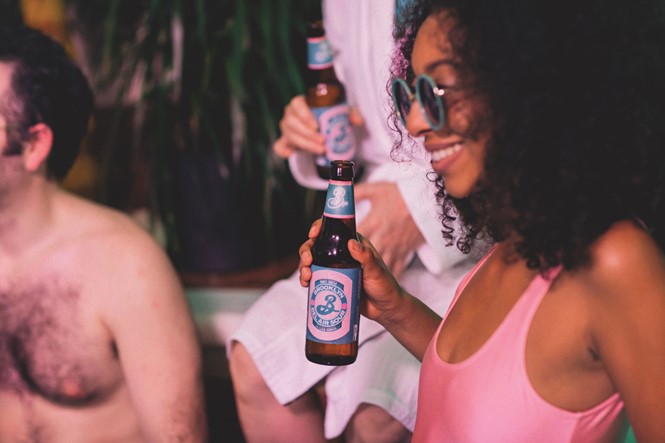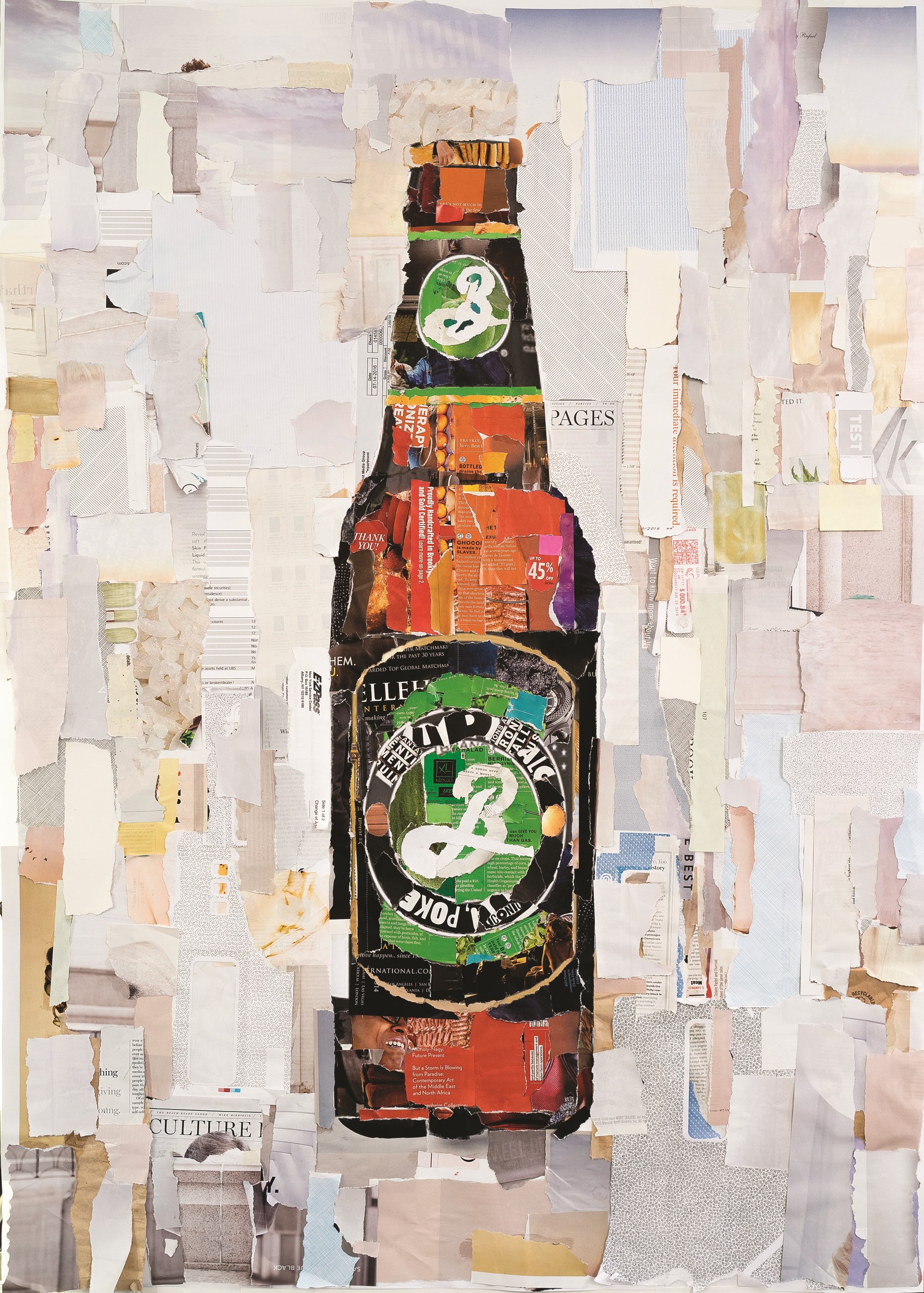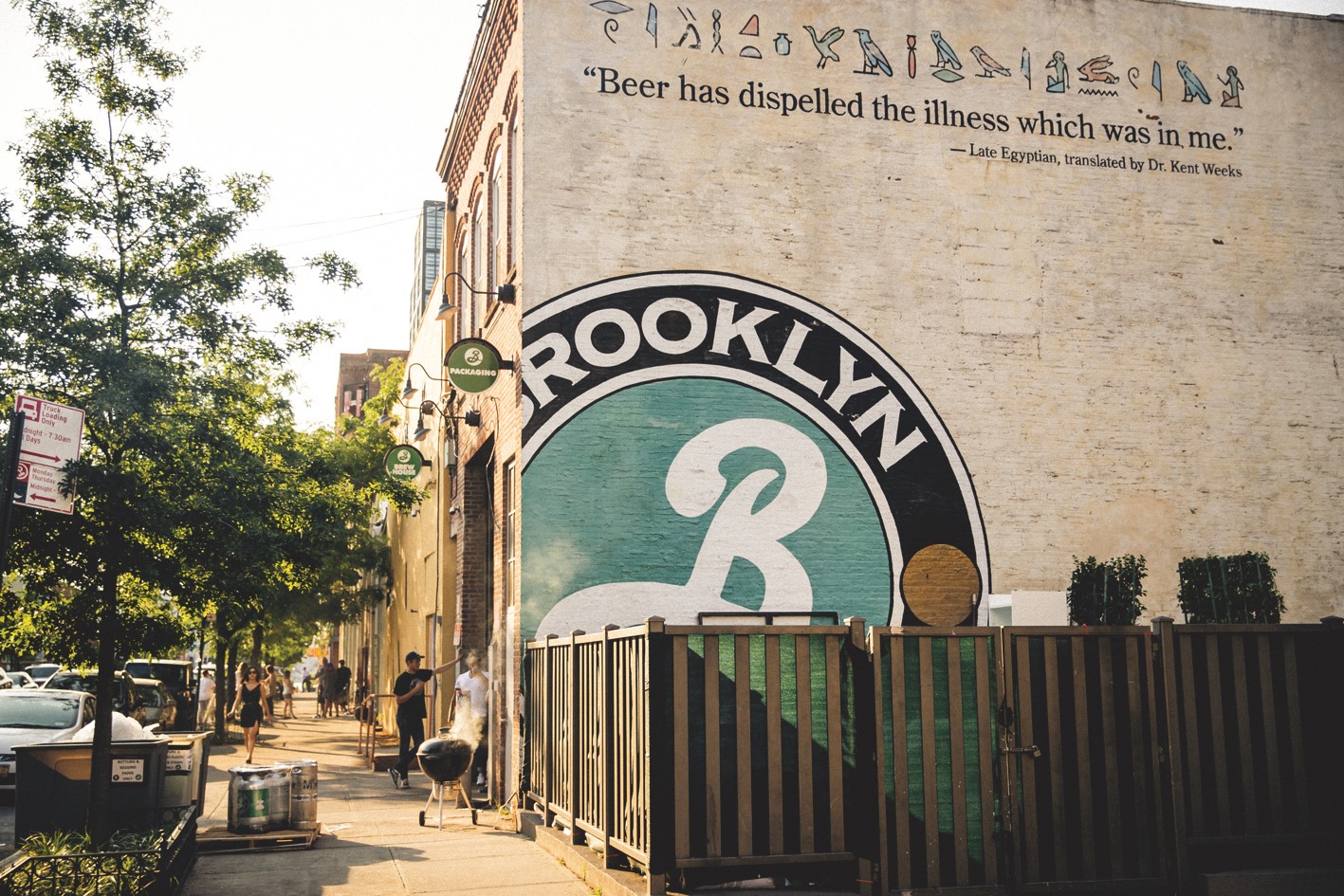Crafting a brewing icon

For the Brooklyn Brewery, great beer matched with simple, effective branding has created a brand that has stood the test of time. Myles Pinfold, founder of WPA Pinfold, asks what makes a successful, longstanding brand in the brewing industry?
In 1988, Bob Dylan released Brownsville Girl, George H W Bush replaced Ronald Reagan as president of the United States and Brooklyn Brewery officially opened its doors in Williamsburg. This area of Brooklyn was just being ‘discovered’ and was described by a famous designer, as a gritty, cool place full of attractive young people. At this time there was a total of 199 breweries in the whole of the US, up from an all-time low of 89 breweries 10 years earlier and a long way off the nearly 7,000 now operating across the country.
Brooklyn (the brewery that is) has become a major force in the beer revolution that was started by home-brewers and which has now become a global movement. Moreover, the Brooklyn brand has endured, unchanged, and is as relevant to its consumers today as it was 30 years earlier.
Originally founded by Steve Hindy and Tom Potter, Brooklyn Brewery still operates from the same place where, previously, approximately 35 breweries had been based – even as late as the 1960s, Brooklyn’s breweries produced 10% of all the nation’s beer.
Brooklyn Lager was the brewery’s first beer and this still accounts for approximately half its production, interestingly the beer was perceived as having a challenging flavour when it was first launched, in comparison to the bland factory beers. Now, it is entry level for today’s flavour-forward craft beer drinkers. The branding for this global brewer has remained the same for three decades and consistency has been the philosophy for Brooklyn Brewery as it has grown to become one of the largest craft brewers in the US, producing over 300,000 brewer’s barrels of beer each year; yet the brewery still retains its homely and artisan personality.
This belies a razor-sharp business acumen and brand stewardship that has seen the company expand across the globe. Success has been achieved largely through focusing on Brooklyn’s purpose and vision rather than the commercial constraints of building and managing a brewery. Hindy learned from the earlier pioneering brewers, especially Matthew Reich of the now defunct Old New York Brewery who managed to make his beer famous by initially contracting out the complexities of brewing and packaging to allow him to focus on marketing and sales. Old New York launched in 1982 and after early success, it then succumbed to the allure of having its own brewery in 1985 and subsequently folded two years later. At the time of its demise, Reich told New Brewer magazine, “The amount of resources you must put into a production facility detracts from the resources you can spend on marketing and sales.”
It took Brooklyn another eight years from launch before it opened a 28 barrel brewery. In the early years, brewing was contracted to the Matt Brewing Company, Old New York’s brewer, in Utica. In the US, Brooklyn continues to be brewed in both Brooklyn and Utica, while brewing also takes place in countries such as Sweden, Japan and Australia under the close supervision of legendary brewmaster Garrett Oliver, who has been with the brewery since 1994.
The brewing industry has gone through a revolution over the last 30 years and throughout this period, Brooklyn has resisted the temptation to change its image, or be a slave to the latest trend. From the outset, its stated commitment to both quality and flavour was at a time when mass production was king and flavour was of little consequence. Hindy says, “We wanted to brew the best beer possible whatever the cost and we strove to bring back brewing to Brooklyn.” Putting quality before profit has become the mainstay of the true craft brewer and has probably been the single factor that has sustained the craft beer revolution as it has gained pace.
Brooklyn Brewery has survived and thrived, when most of the early pioneering craft brewers failed, thanks to Hindy’s clear vision from the start and his no compromise attitude. This same philosophy was applied to the Brooklyn brand. When the brewery was still in the planning stage, he approached all the top design consultancies in New York City, including the likes of Pentagram and Chermayeff & Geismar. Perhaps surprisingly, most were keen to work for the startup, but Hindy was not convinced by the slick presentations and formulaic sales pitches. One company that even refused to return his calls was Milton Glaser Inc. Hindy says, “My wife suggested I go for best designer in the city, Milton Glaser. I tried for a week to get hold of him but he wouldn’t return my calls. I used all my journalistic perseverance.” In the end it paid off when Glaser’s secretary finally put Hindy through due to his persistence. Glaser’s simply says, “I was busy at the time.” This was the start of both a professional relationship and friendship that has lasted to the present day.
Glaser is preeminent among the world’s graphic artists, a true artisan in his own right with forthright views and a design approach to match – he is still working from his MGI studio after almost seven decades in the industry. His work includes the iconic Dylan poster of 1966 with the kaleidoscopic hair, produced while at Push Pin Studios, and the world famous ‘I (heart) NY’ logo.
In the case of the Brooklyn Brewery brand, Hindy was keen to base his new company and logo on an eagle, inspired by the masthead of the defunct Brooklyn Eagle, a newspaper he had long admired. Glaser told him, “Why have an eagle, when you can own all of Brooklyn.’ Thus Brooklyn Lager was born, with its clear and concise wording. The inspiration for the brand itself came from the Brooklyn Dodgers which ironically had moved, lock, stock and barrel, to LA – to be renamed the Los Angeles Dodgers.
Glaser says, “The ‘B’ represents ‘Brooklyn’ and ‘beer,’ the swash effect is like a stream that eludes to liquidity.” While the overall inspiration came from the old style atmospheric qualities of Bavarian beer design, it does not try to be of the moment and he did not want to reference the other startup breweries that were around at the time, such as Boston Brewery. Brooklyn’s brand is one of the most long-lasting
in craft beer. It is partially Glaser’s attitude posing him against marketing research and rehashing what has come before that has been essential for the Brooklyn Brewery. Glaser’s work is not driven by an ownable style, he draws inspiration from the art he admires and combines this with his own visual aesthetic, it is this philosophy that drove him to create the timeless classic that the Brooklyn brand has become.
“The brewing industry has gone through a revolution over the last 30 years and throughout this period, Brooklyn has resisted the temptation to change its image or be a slave to the latest trend”


Ironically, for someone who has been associated with the Mad Men TV series – Glaser created the poster for the final run – he disdainfully says he “has no time for advertising either.” Brooklyn, too, has largely avoided the common advertising channels and gone for a more eclectic approach of community sponsorship and networking.
Brooklyn was created and crafted by real designers who eschew the current trends and build on relevance and differentiation. It has grown to become a global brand that is brewed worldwide to the same recipes and brand standards without having to resource its own brewing capability. This has enabled Brooklyn to operate alongside the traditional global brewers – the sworn enemies of the craft beer revolution. In many respects, it has broken the rules of both camps – craft and big brewer.
What has sustained Brooklyn, enabled it to differentiate from its global rivals and retain its craft mantle? The brewery was launched at a time when many in the first wave of homebrew and craft brewers were failing commercially, largely due to the pressures of scaling up their brewing capability and breaking into a market dominated by the big ‘factory’ brewers. Hindy and Potter learned from this and invested in their brand and its strategy, rather than production. This left them free to concentrate on building a brand in what was one of the coolest communities on the planet. The approach was organic and the currency was Brooklyn beer. They sponsored local events and musicians with their product and this new, craft style of beer was on trend for the talented artists, musicians and entrepreneurs that turned the Brooklyn neighbourhood into the thriving community that it has become today. Since then, the Brooklyn Brewery has maintained its relevance to its wider market by being confidently constant, when others often try too hard.
This philosophy of laid back and homely cool has sustained the brand over the decades. The same values prevail today, three decades on. The head office and brewery on 79 N 11th Street is more micro than macro in both scale and personality – moreover, its events and gatherings still maintain a family feel. In essence, Brooklyn has managed to maintain a consistent sense of purpose that is sustained by the Brooklyn ‘badge of honour’ that Glaser created. Consistency and being relevant pays when it comes to brewing.
The brand lineage continued first through Sue Walsh – designer and Glaser protégé – who in recent years helped Glaser develop the repeat branding ‘wall’ effect that is achieved when the packs are stacked side-by-side. Now Stephen Doyle, another Glaser protégé, is developing more radical design reforms with a ‘freshening up of the brand’, whilst still respecting the work of the grand master. The iconic Brooklyn Lager packaging is a composite story of the brand, including a piece of shrapnel from Hindy’s time in Beirut that represents the first chapter of the story. Despite these more radical changes, the overall design still retains its familiarity. This makeover adds an additional graphic layer to the core range whilst the likes of Defender IPA, have a more ephemeral twist.
Doyle also steadfastly refuses to be a follower of the transient fashions that dominate the beer industry today, stating that current trends in beer branding tend to be grisly and horrible. His aim is to ensure that the brand continues to differentiate itself from the mediocrity that is out there.
Hindy has handed over the reins to his management team and he is now chairman, which frees him up to work on other projects such as a collaboration with Glaser to create a new paper – a rebirth of the Brooklyn Eagle. Looks like he will get his bird after all.













